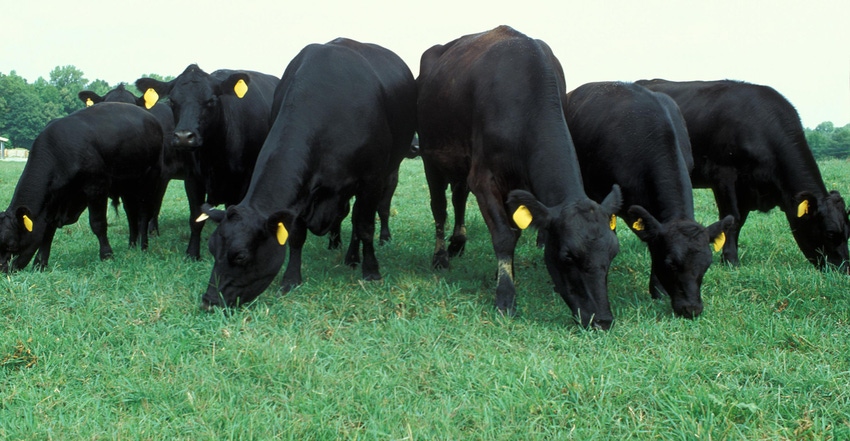Early season pasture management
When first turning animals out onto lush pasture, limit the time that they spend grazing.
April 20, 2023

Most pastures are looking lush and green again especially in the Midwest. Thanks to some perfect temperature days, our cool-season pasture grasses are growing well. Grazing animals seem pleased to have some fresh greens and managers certainly are relieved to see the landscape change from dreary to dreamy again.
With the good that the spring flush of growth brings, there are also some concerns that we shouldn’t forget in the midst of the joy. Now is the time that grass tetany may become a problem and bloat can be an issue too in some circumstances. We also need to continue to consider the health of our forage and soils.
Remember:
Actively growing pastures still need rest between grazing cycles. Allowing pastures to rest can help decrease damage to the plant roots from over grazing and reduce pugging of the field due to heavy animal traffic when the ground is still soft.
When first turning animals out onto lush pasture, limit the time that they spend grazing. Avoid turning ravenously hungry animals out on pasture. The adjustment to their diet (from stored forage to fresh forage) can cause disruption to the digestive tract (leading to bloat or diarrhea) and disrupt the balance of minerals in the body. Continue to provide hay for the animals for the first few weeks of grazing.
Grass tetany is a risk in early spring because the ratio of magnesium in the forage can be too low and cause an imbalance of magnesium in the blood of grazing livestock, which can lead to death. Animals that are lactating are at greater risk for grass tetany than non-lactating animals. To help combat the risk of grass tetany, provided a good source of free-choice mineral with adequate magnesium leading up to and through the early grazing period.
Avoid applying nitrogen fertilizer until after the first grazing cycle (probably until May). Applying nitrogen too early will encourage grass to grow faster and taller but will likely stress the root system. Always start your fertility management strategies with doing a soil test!
It is exciting and gratifying to send animals out to graze, just keep these things in mind as we get into the swing of spring.
You May Also Like


.png?width=300&auto=webp&quality=80&disable=upscale)
